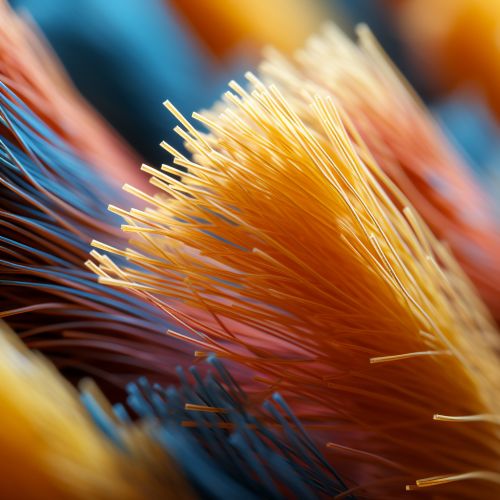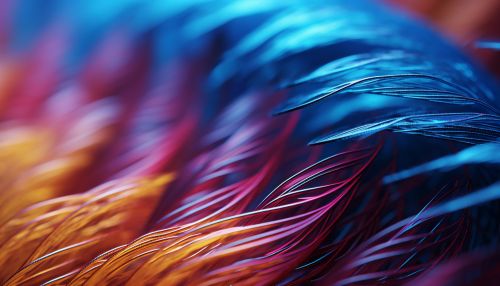Nanofiber
Introduction
Nanofibers are fibers with diameters in the nanometer range. They can be generated from different polymers and hence have different physical properties and application areas. Nanofibers can be used to improve the functionality of a variety of products, including filters, batteries, and medical products. The production of nanofibers dates back to the mid-20th century, but it wasn't until the 1990s that advancements in technology allowed for commercial production.


Production
The production of nanofibers involves several methods, including drawing, template synthesis, phase separation, self-assembly, and electrospinning. Among these, electrospinning is the most commonly used method due to its simplicity and versatility.
Electrospinning
Electrospinning is a fiber production method which uses electric force to draw charged threads of polymer solutions or polymer melts up to fiber diameters in the order of some hundred nanometers. Electrospinning shares characteristics of both electrospraying and conventional solution dry spinning of fibers. The process does not require the use of coagulation chemistry or high temperatures to produce solid threads from solution. This makes the process particularly suited to the production of fibers using large and complex molecules.
Properties
Nanofibers have unique properties that set them apart from other materials. These include a large surface area to volume ratio, high porosity, and excellent mechanical properties such as tensile strength and elasticity. These properties make nanofibers suitable for a wide range of applications.
Surface Area to Volume Ratio
Nanofibers have a large surface area to volume ratio. This property is beneficial in applications such as filtration, where the large surface area allows for the capture of more particles.
Porosity
Nanofibers are highly porous, which makes them excellent for applications that require the passage of air or liquid. The high porosity of nanofibers also makes them suitable for use in medical applications, where they can be used to create scaffolds for tissue engineering.
Mechanical Properties
Nanofibers have excellent mechanical properties, including high tensile strength and elasticity. This makes them suitable for use in a variety of applications, including reinforcement materials in composites.
Applications
Nanofibers have a wide range of applications due to their unique properties. They are used in various industries, including healthcare, filtration, and energy.
Healthcare
In healthcare, nanofibers are used in a variety of applications, including wound dressings, drug delivery systems, and tissue engineering. In wound dressings, nanofibers are used due to their ability to provide a protective barrier that still allows for the passage of air and moisture. In drug delivery, nanofibers can be used to deliver drugs directly to a specific area of the body, improving the effectiveness of the treatment. In tissue engineering, nanofibers are used to create scaffolds that mimic the natural extracellular matrix, promoting cell growth and tissue regeneration.
Filtration
Nanofibers are used in filtration applications due to their large surface area and high porosity. They are used in air filters to remove particles from the air, improving air quality. They are also used in water filters to remove contaminants from water, improving water quality.
Energy
In the energy sector, nanofibers are used in batteries and fuel cells. In batteries, nanofibers are used to improve the performance of the battery by increasing the surface area of the electrode, allowing for more reactions to take place. In fuel cells, nanofibers are used to improve the performance of the fuel cell by increasing the surface area of the catalyst, improving the efficiency of the fuel cell.
Future Developments
The field of nanofibers is continually evolving, with research being conducted to improve the properties of nanofibers and expand their application areas. Future developments in the field of nanofibers include the development of nanofibers with improved mechanical properties, the development of nanofibers with improved functionality, and the development of new methods for the production of nanofibers.
